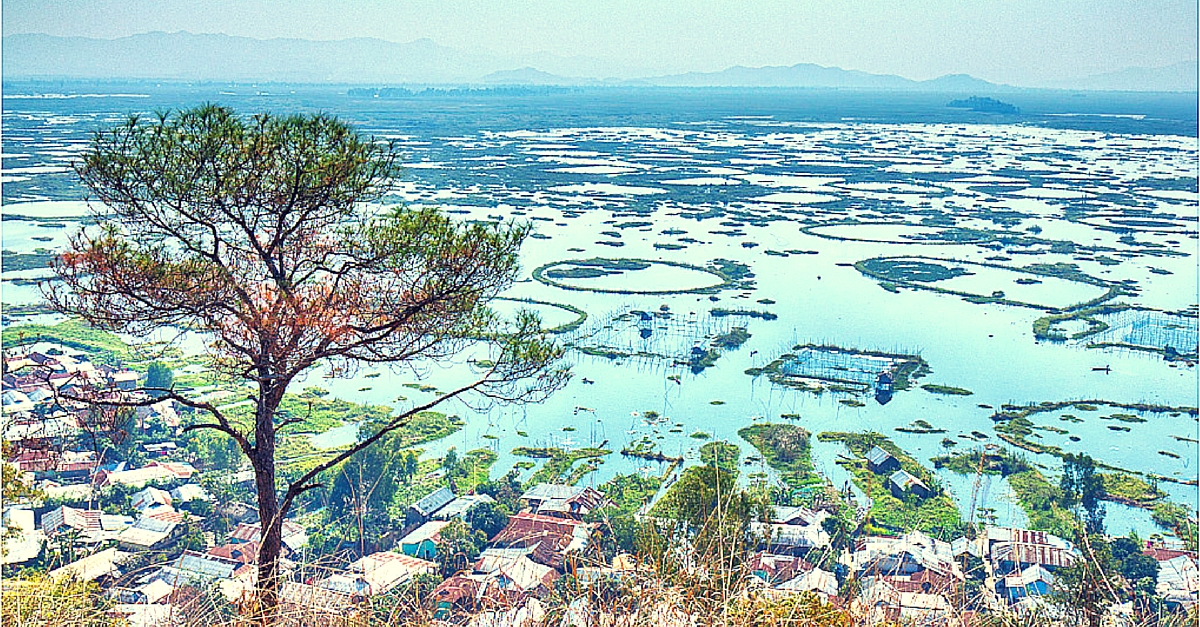Imagine standing on a piece of land that floats on water. No, not for some fictitious narration or a movie scene, but in real life – this is something that’s actually possible in Manipur.
Welcome to Loktak Lake, the largest freshwater lake in Northeast India. This iconic lake, located in Bishnupur district, at a distance of 53 km from Imphal, is known for its circular floating swamps (called phumdis in the local language).

Source: Wikimedia
The term phumdis refers to a collection of heterogeneous mass of vegetation, soil, and organic matter at various stages of decomposition. Resembling miniature islands, these phumdis are found in various forms, floating on the lake.
Covering an area of 300 square metres, the lake is a lifeline for many people. It serves as a source of water for hydropower generation, irrigation and drinking water supply in the region, other than being the source of income for many fishermen who largely depend on it. Children of the fishermen can even be seen playing and running around on these phumdis.
“Loktak is our mother. Since time immemorial, the lake has been feeding the people of Manipur and nourishing us”, a fisherwoman told The Northeast Today.
The Sendra Tourist Home, located on a large phumdi island, also makes for an ideal tourist spot.
The lake is home to 233 species of aquatic plants, more than 100 species of birds, and 425 species of animals, including the Indian python and sambhar.
Photo: Zehawk
What makes the Loktak Lake even more special is the Keibul Lamjao National Park located at the south western part of the lake. It is the world’s only floating national park and is home to the endangered Manipuri brow-antlered deer, Sangai.
Sangai is the state animal of Manipur. Its hooves are adapted to walk on the phumdis.
Source: Wikimedia
This park, which was initially declared as a Sanctuary in 1966, was subsequently declared a National Park in 1977.
Photo: Zehawk
Loktak is a birder’s paradise. The most commonly sighted birds in the region include black kite, northern hill myna, East Himalayan pied kingfisher, lesser skylark, lesser eastern jungle crow, Burmese pied myna, and more.
The lake is now endangered, with innumerable threats like pollution, decline in diversity of avifauna and thinning of phumdis. All this, in turn, threatens the Sangai deer. Phum Shang, an investigative documentary directed by Hao Bam Pabankumar, which examines the serious environmental concerns facing Loktak Lake, won the Golden Conch award for Best Documentary in the Mumbai International Film Festival recently.
Like this story? Or have something to share? Write to us: contact@thebetterindia.com, or connect with us on Facebook and Twitter (@thebetterindia).
If you found our stories insightful, informative, or even just enjoyable, we invite you to consider making a voluntary payment to support the work we do at The Better India. Your contribution helps us continue producing quality content that educates, inspires, and drives positive change.
Choose one of the payment options below for your contribution-
By paying for the stories you value, you directly contribute to sustaining our efforts focused on making a difference in the world. Together, let's ensure that impactful stories continue to be told and shared, enriching lives and communities alike.
Thank you for your support. Here are some frequently asked questions you might find helpful to know why you are contributing?

